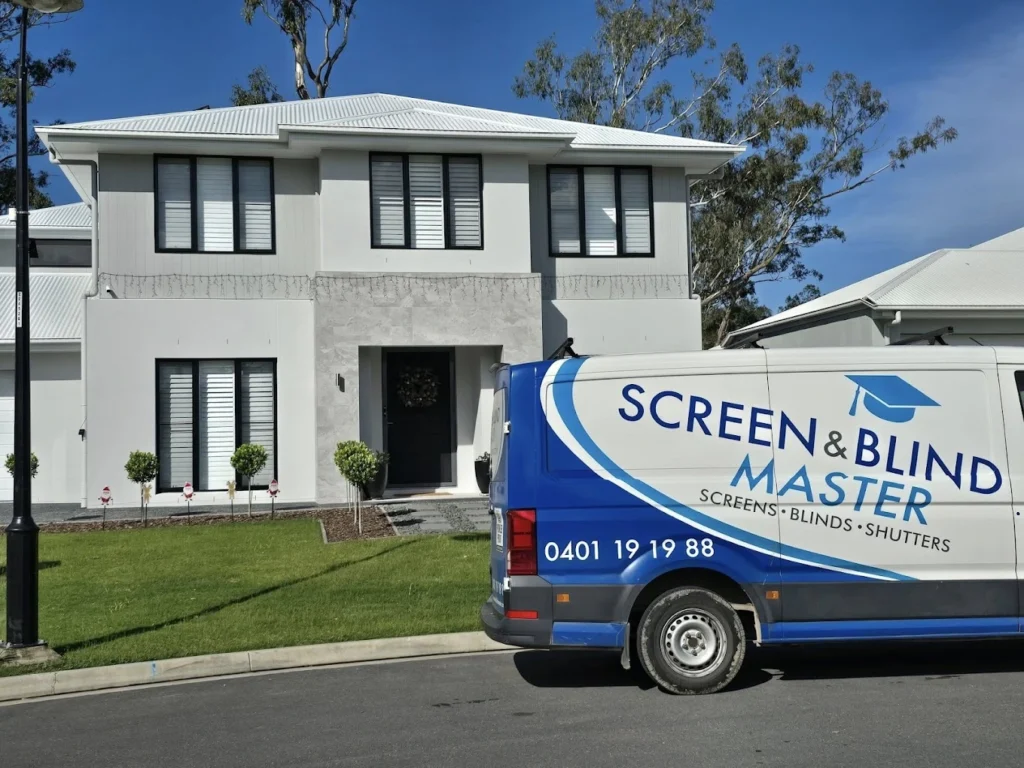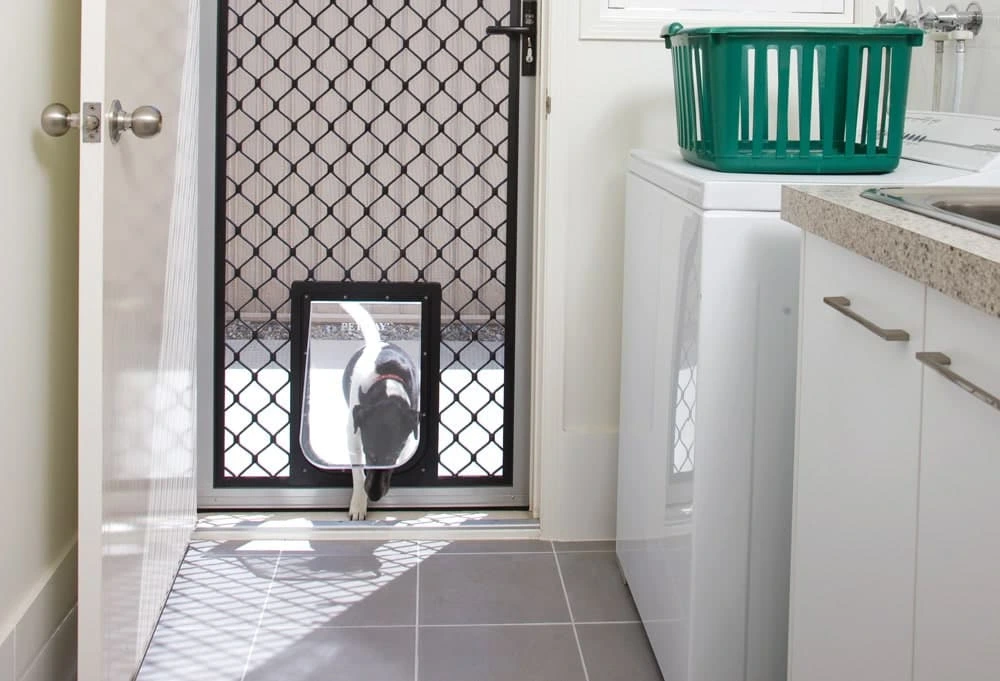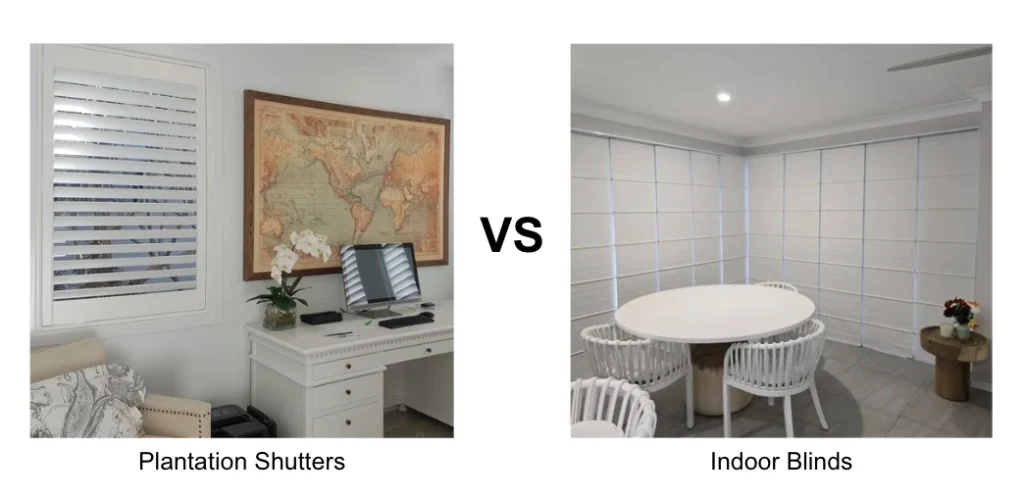
New shutters or blinds can breathe fresh life into your home and help you make the right choice for your interior design. The trouble is, how do you decide between them? When comparing shutters and blinds, are you looking to follow the latest trends, or do you want to invest in something timeless that will stand the test of time?
Deciding between shutters vs blinds is no easy feat. This complete guide will help you make the right decision for your home and budget, covering everything from window shutters to the wide range of blinds available.
What’s the Difference Between Shutters and Blinds?
The primary difference between shutters and blinds is their structure. Plantation shutters are solid and fixed to the sides of your window frames with metal fittings, becoming part of your home’s architecture. Whereas blinds are more flexible window coverings that typically mount from brackets at the top of the window, allowing for easy removal or replacement.
Shutters and blinds are two popular window treatment options, each with their pros and cons. Many homeowners looking for long-term value would argue that shutters offer superior durability and add greater property value. However, blinds could be just as attractive, particularly due to their range of styles, colours, and patterns, while being more budget-friendly upfront. Blinds are a great choice for those wanting flexibility.
How Plantation Shutters Are Built and Installed
Plantation shutters function as permanent architectural features attached directly to your window frames. Most plantation shutters are built with materials like Thermopoly, faux wood, and Timber Eco that resist moisture, making them suitable for all areas, including bathrooms and kitchens.
Professional installation involves precise measurements and mounting brackets secured to your window frame. The shutter panels hang on hinges that swing open and closed, while adjustable louvres provide excellent light control through a tilt rod system. You can tilt the slats to direct natural light and privacy levels throughout the day.
Closed plantation shutters create a sealed barrier for maximum insulation. Plantation shutters come in fixed, hinged, bi-fold and sliding configurations, contributing to their impressive lifespan of 15-25 years or more.
How Blinds Function and Their Flexibility
Blinds operate as adjustable window coverings that hang from brackets mounted above your windows. There are several popular blind types: roller blinds for modern simplicity, panel glide blinds for large openings, vertical blinds for precise light control, and classic Venetian blinds for timeless appeal. Indoor blinds offer exceptional versatility for any room.
Different blind types operate through distinct mechanisms:
- Roller blinds feature fabric that rolls around a top tube using a chain mechanism
- Venetian blinds use horizontal slats that can be tilted and raised or lowered, giving you the ability to tilt the slats for practical light control
- Vertical blinds operate with slats that slide sideways and rotate to control light
- Panel glide blinds feature wide fabric panels that slide along tracks
Blinds provide exceptional adaptability and can be easily removed, replaced, or relocated. While blinds typically need replacement every 5-8 years, this allows homeowners to update their window dressings more frequently without significant investment. Choosing blinds gives you the flexibility to change with interior design styles.
Cost Comparison: Initial Investment and Long-Term Value
Upfront Investment Differences
Plantation shutters require a significantly higher upfront investment due to custom manufacturing, premium materials, and professional installation.
Blinds present a more budget-friendly initial option with prices varying dramatically based on style, material, and quality. Basic roller blinds or vertical blinds offer the most affordable entry point, while premium systems can approach shutter pricing levels. When choosing between shutters or blinds, budget is often a key factor.
Long-Term Value and Replacement Cycles
Quality plantation shutters typically last 15-25 years or more, making them essentially a one-time purchase. Blinds generally need replacement every 5-8 years. Over a 20-year period, you might replace blinds three to four times, potentially making the total cost comparable to a single shutter installation. This is an important consideration when making the right decision.
Energy Efficiency and Property Value
Plantation shutters excel in energy efficiency, potentially reducing heating and cooling costs through superior insulation properties. Shutters provide exceptional thermal performance and can help keep your home comfortable year-round. They’re also considered a capital improvement that can increase your home’s resale value.
Blinds rarely add significant direct value to property assessments, though quality window treatments contribute to overall home presentation. The benefits of shutters extend beyond aesthetics to tangible energy savings.
Style and Material Options
Blind Styles and Configurations
Roller Blinds
Roller blinds come in an enormous range of fabrics, from sheer materials to complete blockout options. Their clean, minimalist design makes them perfect for contemporary homes where sleek lines and uncluttered windows are desired. Fabric blinds offer endless customisation possibilities.
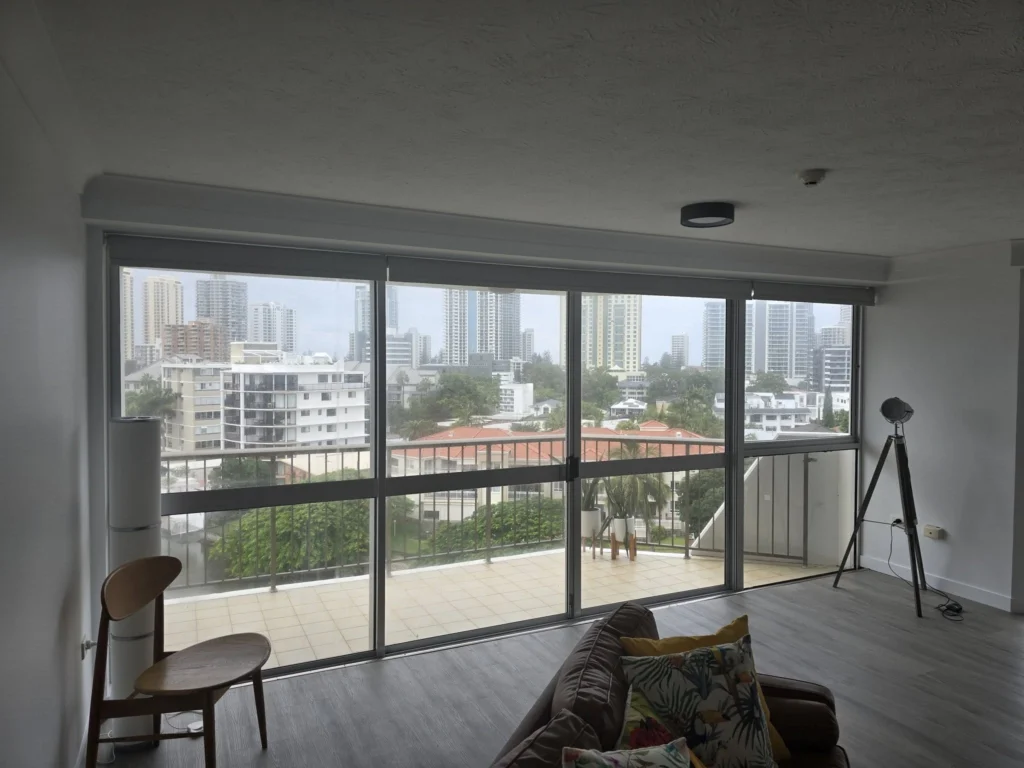
Venetian Blinds
Venetian blinds offer material variety, including timber, aluminium, and PVC options, with slat sizes from 25mm to 50mm. This traditional style offers precise light control and works well in both classic and modern or traditional designs. Venetian blinds are a great option for achieving style and functionality.
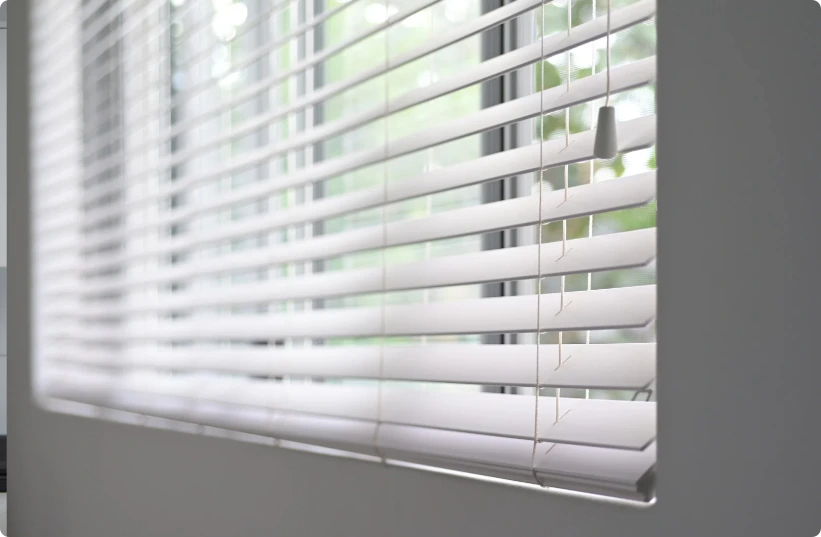
Vertical Blinds
Vertical blinds are available in fabric, PVC, and aluminium with blade widths from 89mm to 127mm. They’re particularly effective for large sliding doors and wide windows where horizontal blind options would be impractical.
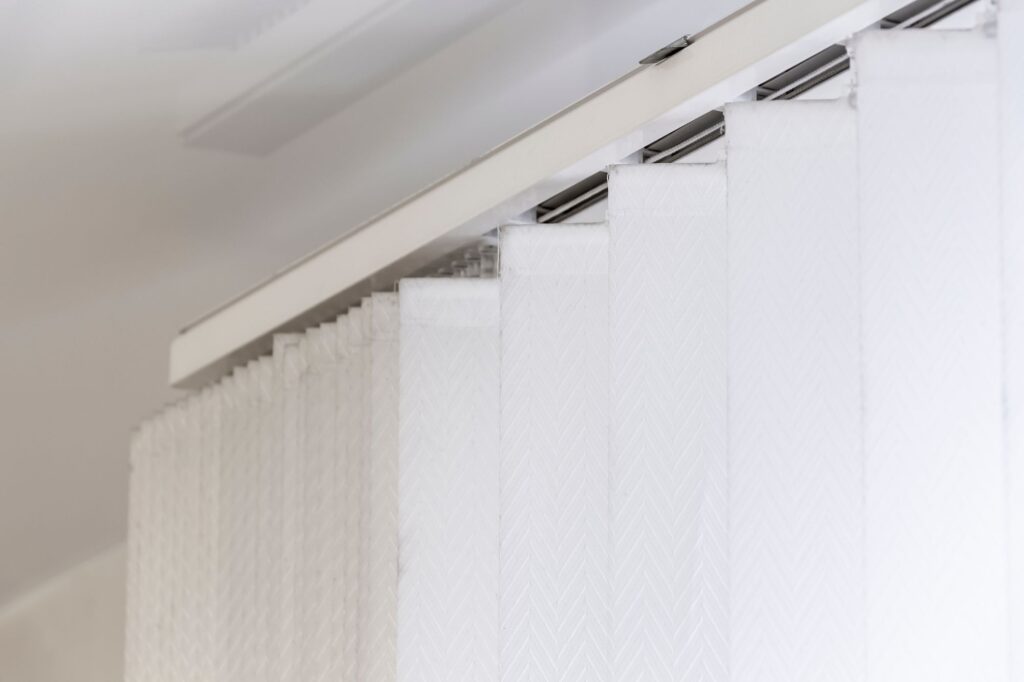
Panel Glide Blinds
Panel glide blinds showcase large fabric panels perfect for contemporary settings. These blinds stack neatly to one side when opened and work exceptionally well for floor-to-ceiling windows and large openings.
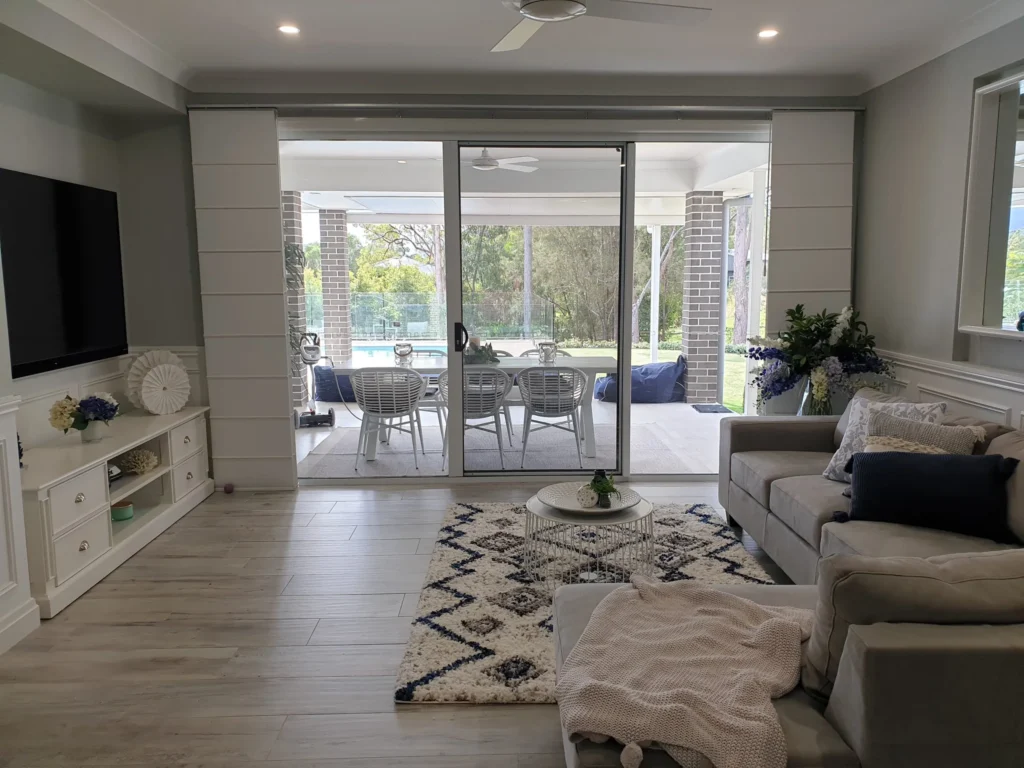
Pros and Cons of Blinds
| Pros | Cons |
|---|---|
| Wide variety of styles, colours and patterns | Shorter lifespan requiring regular replacement |
| Budget-friendly options available | More frequent cleaning and maintenance needed |
| Easy to change and update with trends | Individual slats can break or become damaged |
| Can be fully retracted for unobstructed views | Fabric blinds may fade with sun exposure |
| Suitable for unusual window shapes | Less effective insulation compared to shutters |
| Motorisation available for convenience (motorise for smart home integration) | Can rattle or move in windy conditions |
The range of blinds available means blinds also offer solutions for virtually any window configuration. Blinds offer flexibility and affordability, making them a great choice for homeowners looking to update their décor regularly. Blinds provide practical solutions, though they may have the disadvantage of shorter lifespans.
Plantation Shutter Styles and Materials
Plantation shutters feature wide louvres typically ranging from 63mm to 114mm. Thermopoly shutters combine painted timber appearance with superior durability and moisture resistance. Faux wood shutters (also called wooden shutters) offer natural timber appearance while resisting warping and moisture damage. Timber Eco shutters provide authentic wood grain and can be painted or stained to match your design scheme. Wood shutters bring warmth and elegance to any space.
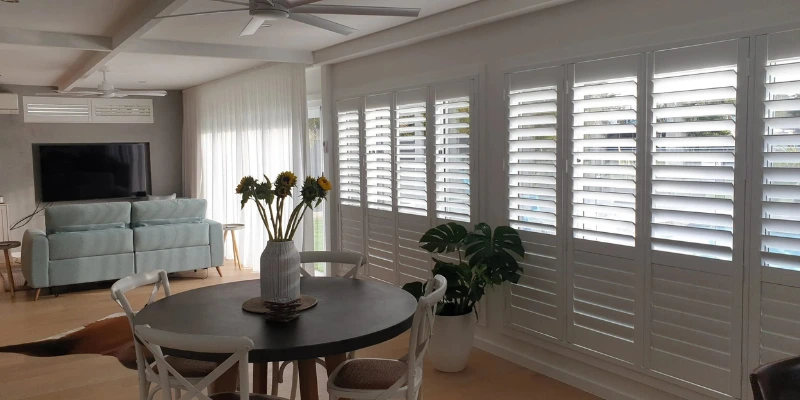
Pros and Cons of Plantation Shutters
| Pros | Cons |
|---|---|
| Exceptional durability lasting 15-25+ years | Higher upfront investment required |
| Superior insulation and energy efficiency | Professional installation necessary |
| Increases property value and curb appeal | Limited style flexibility once installed |
| Easy maintenance with simple cleaning | Cannot be completely retracted for full view |
| Excellent light control with adjustable louvres | May not suit frequent décor changes |
| Moisture resistant materials available | Requires sufficient wall space for operation |
| Timeless design that never goes out of style | Fixed architectural feature cannot be relocated |
The benefits of choosing plantation shutters include longevity, insulation, and adding value to your property. Plantation shutters offer unmatched durability and are a stylish addition to any home. Shutters look elegant and create a functional window solution. Shutters also provide superior light and privacy control. Shutters can be used in virtually any room, making them incredibly versatile. Shutters can also enhance both modern and traditional interior design styles.
Colour and Customisation Options
Blinds offer virtually unlimited colour possibilities with hundreds of fabric options, patterns, and textures. The best blinds combine aesthetics with functionality. Motorisation options add convenience and allow you to motorise your window blinds for smart home integration.
Plantation shutters typically come in over 20 colour options from crisp whites to deep timber stains, with custom colour matching available. When you choose the perfect window treatment for your home, customisation ensures it complements your décor.
Practical Performance Comparison
Light Control and Privacy
Plantation shutters provide exceptional light control through adjustable louvres that can direct natural light upward, downward, or straight through. The wide louvres offer excellent natural light and privacy control with no light gaps when fully closed. Shutters provide the ideal window solution for those prioritising both light and privacy.
Blinds offer different advantages depending on type. Roller blinds provide flexibility from complete blockout to gentle filtering and can fully retract for unobstructed views. Venetian blinds offer precise light adjustment—you can tilt the slats to control light entering the room. Vertical blinds excel at controlling harsh afternoon sun. Window blinds give you multiple options to control light throughout the day.
Energy Efficiency and Sound Insulation
Plantation shutters excel in energy efficiency due to solid construction and tight-fitting installation. The air gap between closed plantation shutters and windows creates an insulating barrier that reduces heat transfer. This insulation helps make your home more energy-efficient. They also provide superior sound insulation with dense materials creating effective noise dampening.
Blinds vary in insulation properties. Roller blinds with thermal backing provide good insulation, while venetian blinds with reflective slats help reject summer heat. Thicker roller blind fabrics provide moderate sound dampening, though they don’t create the sealed barrier that shutters provide. Compared to shutters, most blind options offer less thermal performance.
Weather Resistance
Plantation shutters resist moisture, humidity, and temperature fluctuations without warping or fading. Modern materials like Thermopoly and faux wood are engineered for harsh conditions. Shutters for your home in coastal or humid climates are an excellent investment. Blinds have varying weather resistance—aluminium venetian blinds resist moisture well, while quality roller blind fabrics resist fading and damage.
Room-by-Room Analysis
Bedrooms
Shutters provide excellent room darkening and sound insulation for quality sleep with no dust accumulation. The perfect window treatment for bedrooms balances light control with aesthetics. Blinds offer flexibility, particularly blockout roller blinds, ideal for changing décor styles or budget-conscious choices. Roman blinds are another stylish option for bedroom windows.
Living Areas
Shutters add visual appeal and property value while creating an elegant architectural feature. Shutters look timeless and sophisticated in living spaces. Blinds work well where style flexibility matters, with roller blinds fully retracting for unobstructed views. When you find the perfect window treatment, it should complement your living area’s design while offering practical benefits.
Bathrooms and Wet Areas
Shutters with moisture-resistant materials like Thermopoly resist warping and mould with easy-clean surfaces. This makes them a popular choice for homeowners with bathrooms and wet areas. Blinds require careful material selection—aluminium venetian blinds work well, but avoid fabric blinds in high-humidity areas.
Kitchens
Shutters resist cooking odours, steam, and grease with smooth surfaces that wipe clean easily. The benefits of choosing shutters for kitchens include easy maintenance and durability. Blinds can work, but venetian blinds need detailed cleaning, and roller blinds may absorb cooking odours. Blinds could require more frequent cleaning in kitchen environments.
Large Windows and Sliding Doors
Shutters work for large windows but require bi-fold or sliding configurations, with the cost increasing significantly by size. Shutters can be used effectively on large openings with the right configuration. Blinds excel for large spaces—panel glide and vertical blinds are designed for wide areas and are more cost-effective for covering large areas. The best solution often depends on your budget and aesthetic preferences. Read this article to decide which blinds are the best for sliding doors.
Installation and Professional Requirements
Plantation shutters require professional installation to ensure proper operation, safety, and warranty coverage. The complexity of measuring, custom fitting, and mounting makes DIY installation impractical. Professional installation guarantees your shutters are fixed to the sides of window frames correctly.
Blinds can technically be DIY installed, but professional installation is highly recommended. Proper installation requires precise measurements, level mounting, and understanding of safety requirements. Professional installation ensures optimal performance, compliance with Australian safety standards, and proper warranty coverage.
Get a Free In-Home Consultation
When comparing plantation shutters vs blinds, the choice ultimately depends on your priorities and budget. Shutters vs blinds comparisons show that plantation shutters offer superior durability, energy efficiency, and property value enhancement, making them a great choice for permanent solutions. Blinds and shutters both serve important roles, with blinds providing exceptional flexibility, style variety, and budget-friendly options. Understanding blinds vs shutters helps you choose shutters when longevity matters, or choose the best blinds when flexibility is key.
Contact Screen and Blind Master today for a free in-home consultation. Our window treatment specialists will visit your home, assess your specific needs, and help you find the perfect window treatment for your home. We’ll provide expert advice and a free, no-obligation quote tailored to your requirements, ensuring you make the right decision for your unique situation.
